Last week, I cut raw chicken on my wooden board like I’ve done a hundred times before. But something felt off. A strange smell lingered the next day. That’s when I knew I had to do better. Learning how to clean wooden cutting board after raw meat changed everything. It’s not just about rinsing and moving on. Bacteria from raw meat can hide deep inside the wood. Unlike plastic, wood needs more care to stay safe. Over time, I found simple ways to clean it right. Let me walk you through my method. It’s easy, safe, and actually kind of satisfying.
Can You Cut Raw Chicken on a Wood Cutting Board?
Yes, you can use a wooden cutting board for raw chicken. I’ve done it for years. The secret is simple: clean it well right after cutting.
Many people think plastic is safer. It looks smooth and clean. But looks can fool us. Wood has a natural way of fighting bacteria. It draws moisture in and traps germs near the surface. Over time, those germs die off on their own.
Plastic boards often hold juices in the deep knife cuts. Wood handles that better, as long as you wash them right away. I always rinse mine with hot water, scrub with soap, then sanitise. Quick action keeps smells and stains away.
01. Scrape Off the Meat Bits
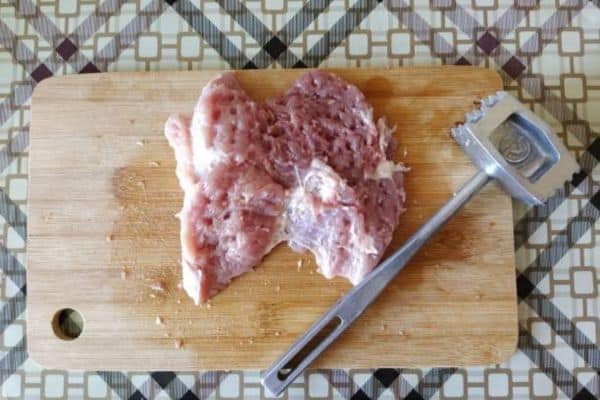
Use a bench scraper or the back of a knife. Gently push off meat scraps or fat left on the board. This step helps keep your sink and sponge cleaner later.
02. Rinse with Hot Water
Turn on the tap and rinse the board with hot water. This loosens any leftover juice. Don’t soak it. Just a quick rinse does the job.
03. Wash with Dish Soap and a Soft Brush
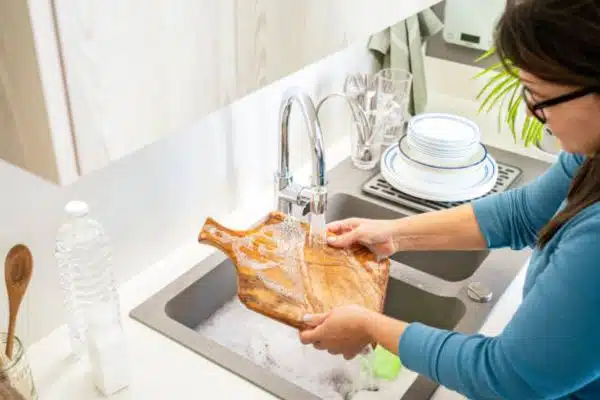
Add a few drops of mild dish soap. Use a soft brush or sponge to scrub the surface. Don’t forget the edges and corners. Avoid steel wool—it’s too rough for wood.
04. Sanitise the Surface
Pour white vinegar or 3% hydrogen peroxide over the board. Let it sit for five minutes. Then rinse again with hot water. This step kills bacteria without using harsh bleach.
05. Dry Standing Up
Wipe the board with a clean towel. Then stand it upright to air dry. Drying flat traps moisture, while drying upright keeps your best cutting board for brisket safe, fresh, and long-lasting.
How to Sanitise a Cutting Board Naturally (Without Harsh Chemicals)
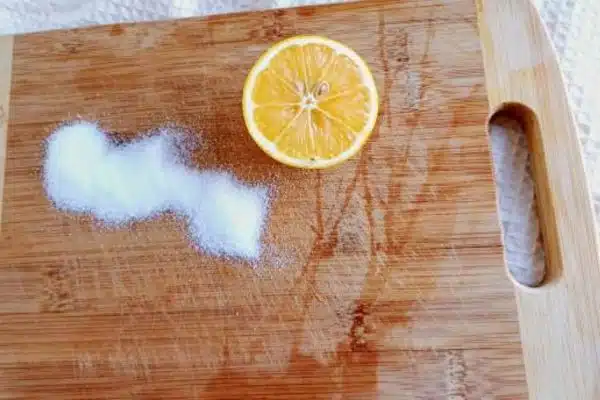
You don’t need bleach to keep things clean. With a few kitchen staples, you can kill bacteria and freshen up in minutes.
Use White Vinegar
White vinegar is a natural germ killer. Pour it straight onto the board and spread it with a clean cloth. Let it sit for five minutes, then rinse with hot water. Vinegar fights bacteria without harming the wood.
Try Hydrogen Peroxide (3%)
You can also use hydrogen peroxide from the drugstore. Pour a small amount over the board and wipe with a paper towel or sponge. Let it bubble for five minutes. Then rinse with hot water. It’s safe and powerful.
Add Lemon and Salt for Freshness
Cut a lemon in half and dip it in coarse salt. Scrub the board in circles. Let it sit for five to ten minutes. Then rinse well and dry. This method removes odours and gives a fresh citrus scent.
Bonus Tips from Experience (Make Your Board Last Longer)
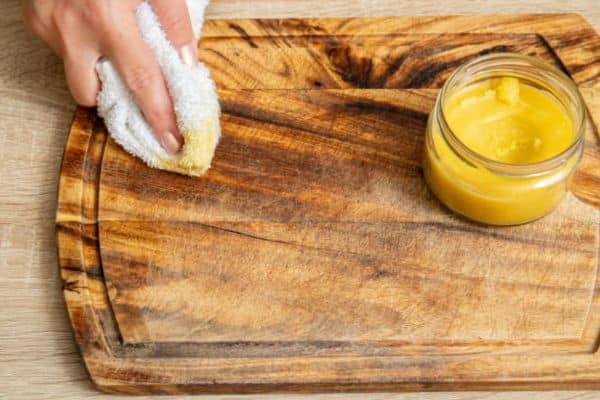
I’ve used the same wooden cutting for years. It’s been through chicken, brisket, and more veggies than I can count. Want yours to last just as long? Here are a few things I always do—and a few I avoid.
Never Soak Your Board
Soaking is the fastest way to ruin a wooden board. Water seeps in, swells the wood, and causes cracks. I always rinse, wipe, and dry right away. No soaking—ever.
Oil It Once a Month
Wood gets dry just like skin. I rub mine with food-safe mineral oil once a month. Just wipe it on, let it sit overnight, and wipe it off in the morning. This keeps the wood strong and smooth.
Keep One Board for Meat, One for Veg
I use one board for raw meat and another for vegetables and bread. It keeps flavors clean and helps avoid germs. A simple habit that makes a big difference.
Flip It to Spread the Work
I rotate sides every few days. That way, one side doesn’t wear out too fast. My board looks balanced and feels great to use on both sides.
Common Mistakes to Avoid When Cleaning Wooden Cutting Boards
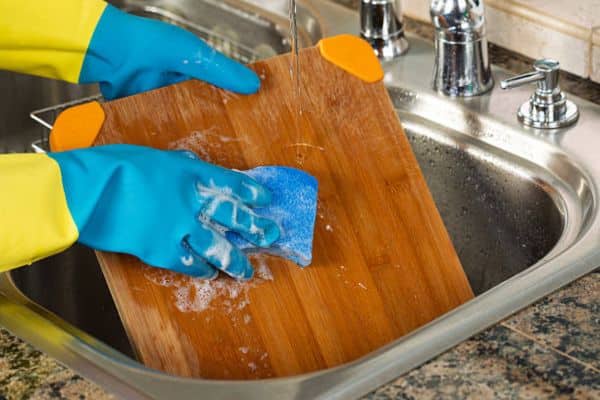
Even with the best intentions, it’s easy to slip up. These are the mistakes I’ve made—or seen others make—that can shorten your board’s life or make it unsafe to use. Avoiding them keeps in top shape for years.
Using Bleach
Bleach may seem like a quick fix, but it’s too harsh for wood. It dries out the fibres and can leave behind a smell you won’t like. Stick to vinegar or hydrogen peroxide for safe sanitising.
Air Drying Flat
Laying a wet board flat traps moisture underneath. This leads to warping and mould. I always dry mine upright so both sides get airflow. It works like a charm.
Skipping the Sanitising Step
Washing with soap isn’t enough after cutting raw meat. Without sanitising, bacteria can stay hidden in the wood. One quick vinegar or peroxide rinse makes a big difference.
Ignoring Deep Knife Cuts
Over time, deep grooves trap meat juice and odors. I sand my board gently once or twice a year to smooth it out. A little sanding goes a long way.
Final Thoughts
Taking care of a wooden cutting board doesn’t have to feel like a chore. Once you learn the right steps, it becomes second nature. A quick rinse, a good scrub, and a natural sanitiser are all it takes to keep things clean and safe.
Raw meat comes with risks, but those risks shrink fast with simple habits. Clean right after each use. Dry it well. Treat it with care. These small actions help protect your food, your health, and your home.


